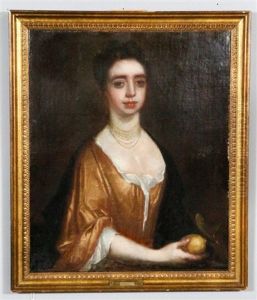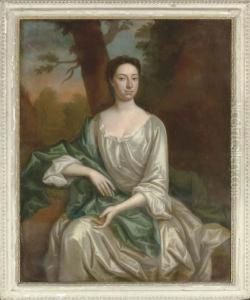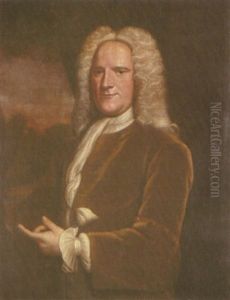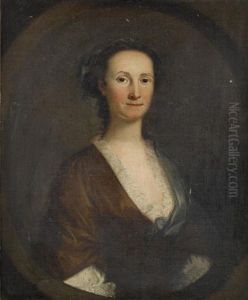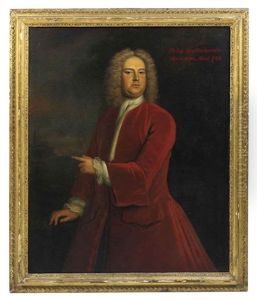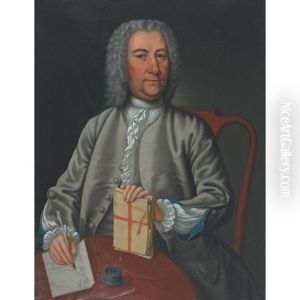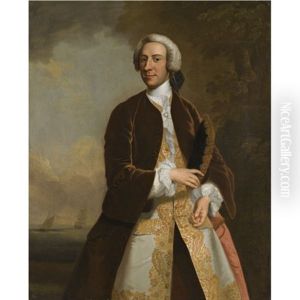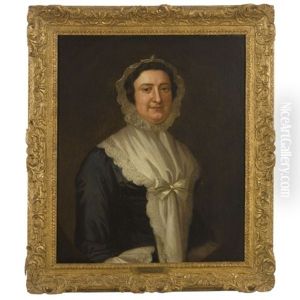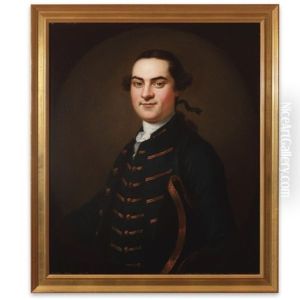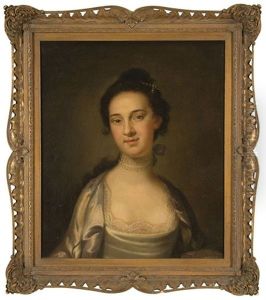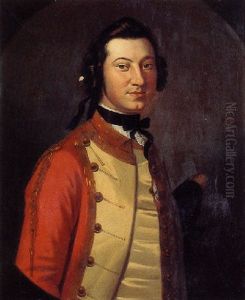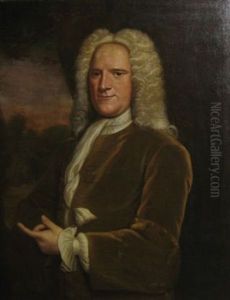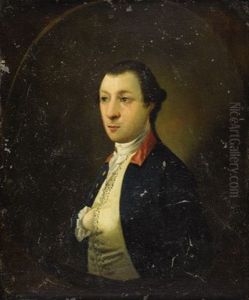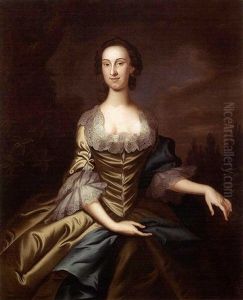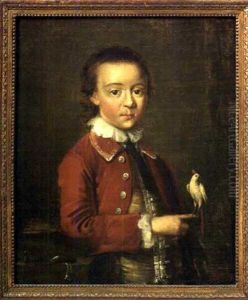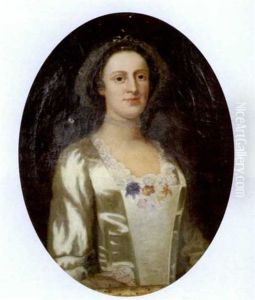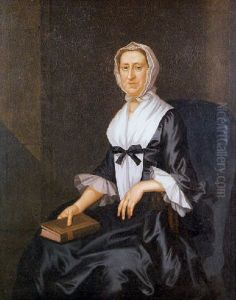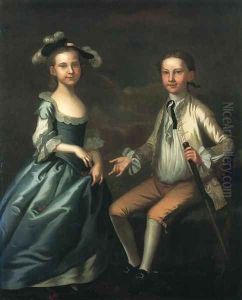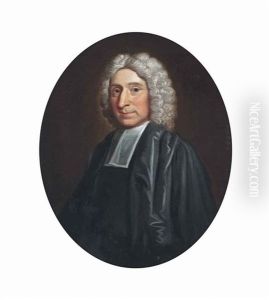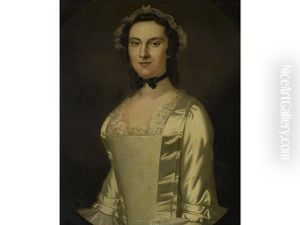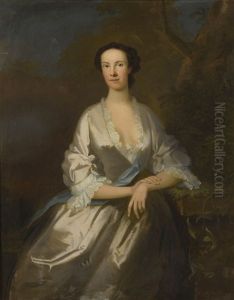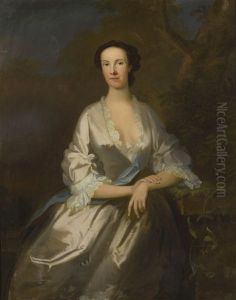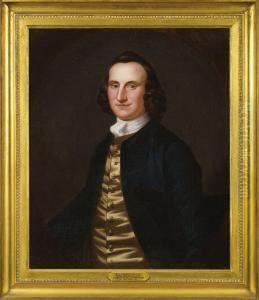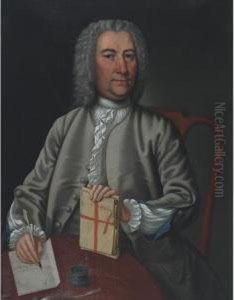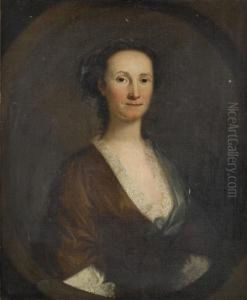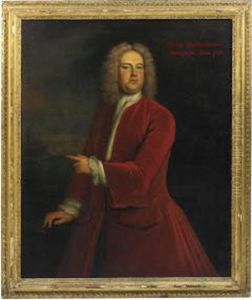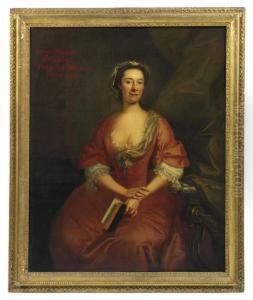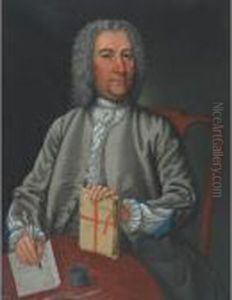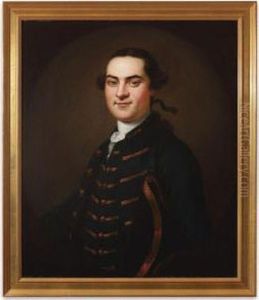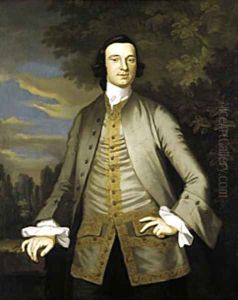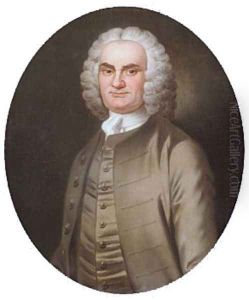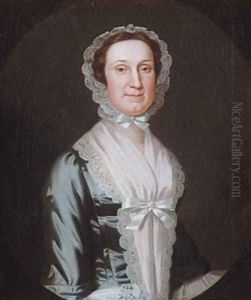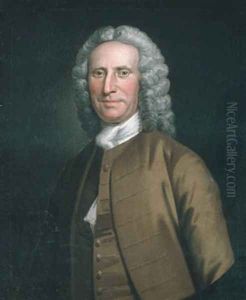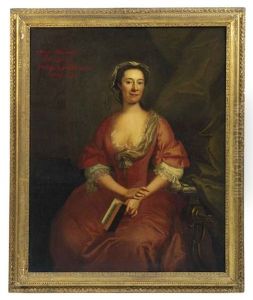John Wollaston Paintings
John Wollaston was an English portrait painter who worked in the colonies of North America, primarily in the middle of the 18th century. Little is known about his early life and training in England, but it is believed that he was active as a painter there before his arrival in America. Wollaston is noted for his distinctive style, which included elegant poses and detailed clothing, capturing the sophistication and aspirations of his colonial American sitters.
Wollaston's American career began in the 1740s, when he first arrived in the Mid-Atlantic colonies. Over the next few decades, he traveled extensively within the American colonies, from New York to Virginia, painting portraits of prominent local figures and their families. His works are characterized by their meticulous detail, vibrant colors, and the use of a somewhat formulaic approach to faces, which nonetheless captured the personality and social standing of his subjects.
One of the hallmarks of Wollaston's style is the 'Wollaston eye,' a peculiar treatment of the sitter's eyes, which are often depicted with a distinctive almond shape and an exaggerated catchlight. This feature has helped art historians identify his works among those of contemporaries. Despite the formulaic aspects of his portraits, Wollaston's skill in depicting textiles and accessories, and his ability to render the human form with elegance, made his paintings highly sought after during his lifetime.
After several years of success in America, Wollaston returned to England in the 1760s, where he continued to work as a portraitist until his death in the mid-1770s. While not as well remembered as some of his contemporaries, John Wollaston played a significant role in the development of colonial American portraiture, leaving behind a valuable record of the period's social elites and contributing to the broader story of art in the British American colonies.
